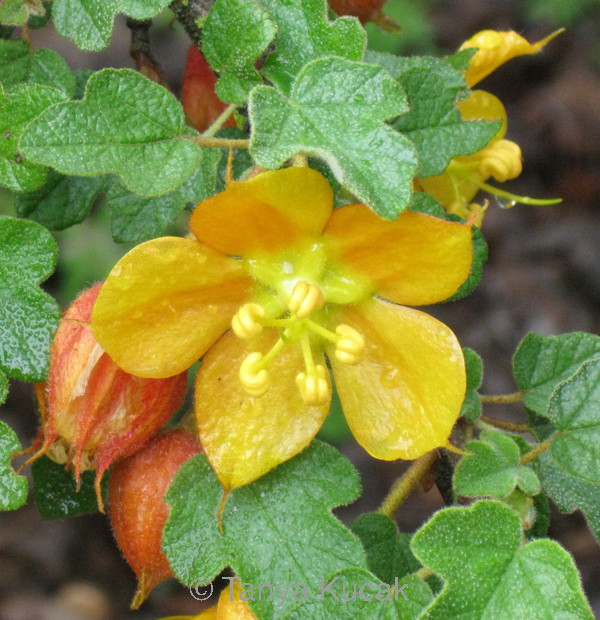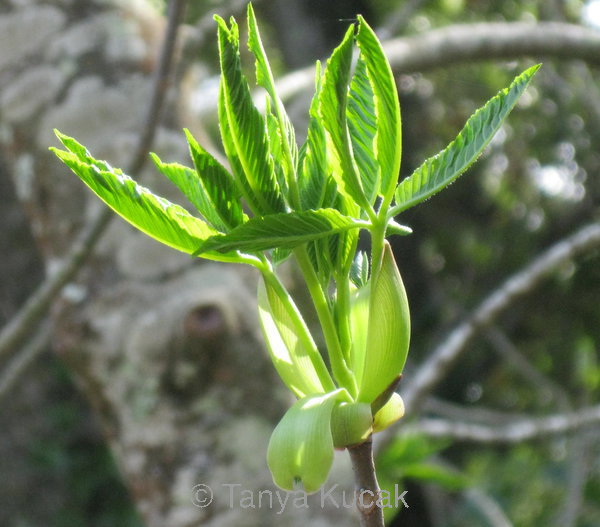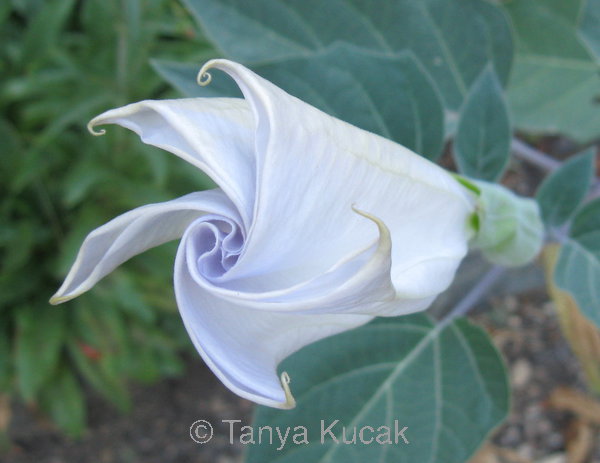
Thoughtful and protracted observation is one of the secrets of good gardeners. Plants change not only seasonally but from day to day. An easy way to mark the changes and get to know native plants is to photograph your favorites from every angle, and then view the photos on a desktop or laptop screen. Or you could draw or paint them, or simply spend time with them and look closely.
Photos of yarrow, globe gilia, native buckwheats, evergreen currant, and other plants with clusters of tiny flowers are revealing. Sometimes the tiny flowers don't seem as showy to the naked eye, but on a desktop screen, you can see the intricate structures and subtle color variations. The flowers of evergreen currant – primarily a foliage plant – can be an unexpected pleasure. If I'm looking for bees, I visit a patch of native buckwheats. While looking closely at the buckwheat flowers, my eye is drawn to less obvious pollinators as well. In early spring, the first place I see lady beetles is on yarrow, either atop the flat flower clusters or amidst the ferny foliage. The longer I observe, the more lady beetles I see. For year-round interest, few plants equal California buckeye. From the time it goes dormant in midsummer to the first hints of green in late winter, the sculptural branching predominates, often with the telltale bulbous buckeye fruits still hanging on. If the tree is growing in an unpolluted area, the abstract patterns of lichens growing on the bark are especially interesting. Once the leaf buds swell, I enjoy watching every step of the unfurling, from the emergence of multiple leaf tips to the growth of each five-part compound leaf. On a single tree, you can see some leaves barely peeking out of the bud while others have fully emerged. Not long after the tree has leafed out, buckeye flower buds swell and emerge, and insects are drawn to the large flower clusters.
I'm always entranced by the play of light through a manzanita grove. Pruned to reveal their sinuous reddish branches, manzanitas are especially beautiful year-round. Clusters of small pink or white urn-shaped flowers and new leaves star in early spring, then red berries and peeling bark show up in summer. Often the leaves, when backlit, reveal a halo of fine white hairs along the edges.
Inspired by the alluring white datura flowers in New Mexico, Georgia O'Keeffe grew the plants outside her door and painted the flowers on huge canvases. In California, sacred datura commands attention both as the flowers unwind from tight buds in late afternoon and as the spiky, purple-tinged green pods mature and open. When the pods burst open, revealing the ripe seeds, the open maw of the spiky pods looks faintly menacing.
Ever since I first looked closely at a fremontia flower over 25 years ago, their architectural structure has drawn me in. The bright yellow-orange flowers look like wax-museum representatives of the mallow family. In contrast, the gently curved leaves and inflated buds have a rougher texture and more muted colors.

The sharply defined bright yellow flowers of fremontia contrast with the textured orange-tinged buds and the gentle curves of the bumpy leaves.

Many shrubby manzanitas feature peeling bark in the summer months. The sculptural mahogany-red branches contrast with the vivid green leaves.

The emergence of vibrant green leaves on summer-dormant buckeye trees is one of the highlights of the late winter landscape.

The white flowers of sacred datura start to unfurl late in the day, starting as tightly wound cylindical buds and opening to white trumpet-shaped flowers that highlight the garden in the evening.
© 2014 Tanya Kucak